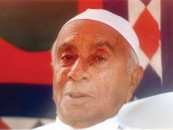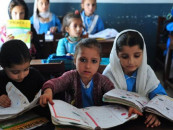Surveying the economy 2009-10

Surveying the economy 2009-10
The revision downwards of the growth in 2008-09 from two per cent to 1.2 per cent was in the nature of a technical correction. It is routine to revise nine to 10 months provisional data when data for 12 months becomes available. While data is made available with a lag everywhere, unfortunately in Pakistan, the lag is longer than necessary due to low investment in the statistical system. It also has a low status in the bureaucracy. In any case, this technical correction, or the base effect, adds a full percentage point to the next year’s growth of 4.1 per cent. Of course it remains a poor rate of growth, with no real signs that we may be moving to the desired seven to eight per cent growth any time soon.
What is important is to see is where is this growth coming from and who benefits from it. In agriculture, the principal crops experienced a negative growth of 0.2 per cent. Similarly, the minor crops suffered a negative growth of 1.2 per cent. The two per cent growth reported for the agriculture sector as a whole came largely from the livestock subsector, itself growing at 4.1 per cent. Rising meat exports and milk output provide some evidence of that. Principal crops — the most incentivised sub-sector in terms of output prices and input subsidies —has not done well. Nor has the minor crops subsector, which posted a negative growth in 2008-09 as well. This is reflected in rising imports of daals (lentils) and their prices. Considered a pro-poor sector, the low growth in agriculture cannot but exacerbate rural poverty, which is known to be higher than urban poverty.
But the urban areas suffer from a higher rate of unemployment, despite the 4.4 per cent growth recorded for large scale manufacturing against a negative growth of 8.2 per cent in 2008-09. While this growth is commendable in the face severe energy constraints and an extremely uncertain environment, the employment intensity of manufacturing continues to decline. Nor is the services sector, enjoying higher growth (4.6 per cent) compared to the commodity sector (3.6 per cent) — a great hope for the enormous number of job seekers. In fact, 59 per cent of the GDP growth of 4.1 per cent has been contributed by services.
The higher growth of the services sector suggests that the growth in the economy continues to be driven by consumption rather than investment, calling into question its long run sustainability. According to the survey, 96 per cent of the GDP growth was contributed by consumption and the remainder four per cent by net exports reflecting an improved current account balance. The contribution of investment was nil. Actually, gross fixed investment declined by 0.6 per cent.
In addition to growth, poverty was the area of creative accounting during the Pervez Musharraf-Shaukat Aziz period. Pakistan Social and Living Standards Measurement (PSLM) surveys have formed the basis of periodic poverty estimation. The last such survey remained unanalysed because of its suspect frame. If the trend based on the earlier surveys is any guide, this unanalysed survey would have shown that Pakistan had already achieved the Millennium Development Goals (MDG) target of a headcount ratio of 13 per cent fixed for 2015. While it was proper to hold over this survey to ensure that it is not infested, the counter estimates of poverty presented in the last Economic Survey were mere guestimates. Only a new PSLM can be the credible basis to arrive at the poverty number.
This year’s Economic Survey says just that in the executive summary, but then it goes to make a claim in the long-winded chapter on poverty that Pakistan had achieved the MDG goal of halving poverty by 2015 in 2005-06.
Published in the Express Tribune, June 6th, 2010.



















COMMENTS
Comments are moderated and generally will be posted if they are on-topic and not abusive.
For more information, please see our Comments FAQ